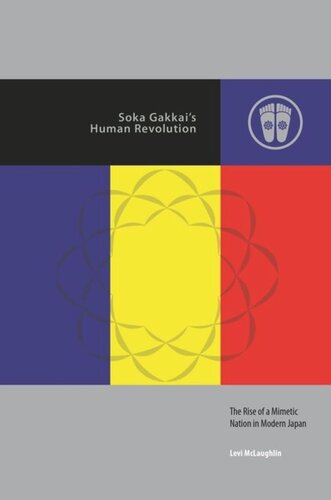

Most ebook files are in PDF format, so you can easily read them using various software such as Foxit Reader or directly on the Google Chrome browser.
Some ebook files are released by publishers in other formats such as .awz, .mobi, .epub, .fb2, etc. You may need to install specific software to read these formats on mobile/PC, such as Calibre.
Please read the tutorial at this link: https://ebookbell.com/faq
We offer FREE conversion to the popular formats you request; however, this may take some time. Therefore, right after payment, please email us, and we will try to provide the service as quickly as possible.
For some exceptional file formats or broken links (if any), please refrain from opening any disputes. Instead, email us first, and we will try to assist within a maximum of 6 hours.
EbookBell Team

4.4
102 reviewsSoka Gakkai is Japan’s largest and most influential new religious organization: It claims more than 8 million Japanese households and close to 2 million members in 192 countries and territories. The religion is best known for its affiliated political party, Komeito (the Clean Government Party), which comprises part of the ruling coalition in Japan’s National Diet, and it exerts considerable influence in education, media, finance, and other key areas.
Levi McLaughlin’s comprehensive account of Soka Gakkai draws on nearly two decades of archival research and non-member fieldwork to account for its institutional development beyond Buddhism and suggest how we should understand the activities and dispositions of its adherents. McLaughlin explores the group’s Nichiren Buddhist origins and turns to insights from religion, political science, anthropology, and cultural studies to characterize Soka Gakkai as mimetic of the nation-state. Ethnographic vignettes combine with historical evidence to demonstrate ways Soka Gakkai’s twin Buddhist and modern humanist legacies inform the organization’s mimesis of the modern Japan in which the group took shape. To make this argument, McLaughlin analyzes Gakkai sources heretofore untreated in English-language scholarship; provides a close reading of the serial novel The Human Revolution, which serves the Gakkai as both history and de facto scripture; identifies ways episodes from members’ lives form new chapters in its growing canon; and contributes to discussions of religion and gender as he chronicles the lives of members who simultaneously reaffirm generational transmission of Gakkai devotion as they pose challenges for the organization’s future.
Readers looking for analyses of the nation-state and strategies for understanding New Religions and modern Buddhism will find Soka Gakkai’s Human Revolution to be an especially thought-provoking study that offers widely applicable theoretical models.